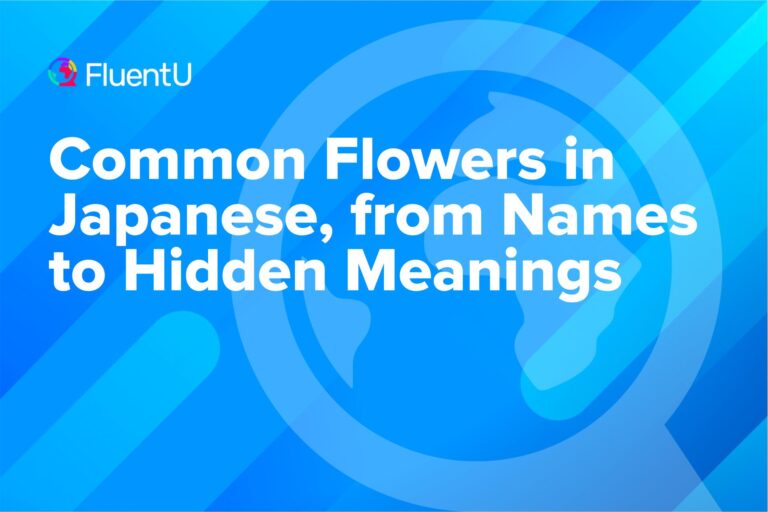7 Ways to Say Good Morning in Japanese, Plus Related Phrases

Are you a morning person? Spread the joy by wishing your friends and colleagues a good morning in Japanese. Discover seven different ways to say “good morning” in Japanese in the guide below, from the formal to the super casual.
I’ll also share some tips on how to choose the right formality level in any situation, as well as some body language and gestures you can use during greetings.
Download: This blog post is available as a convenient and portable PDF that you can take anywhere. Click here to get a copy. (Download)
Formal “Good Morning” in Japanese
おはようございます (Ohayo gozaimasu)
This is the most common and polite way to say good morning in Japanese. It’s quite literally the textbook way to say good morning!
This expression is quite formal, so reserve it for greeting someone you don’t know well or someone with a higher age or social standing than you.
おはようございます、お世話になっております (Ohayo gozaimasu, osewa ni natte orimasu)
This polite greeting combines the formal greeting ohayo gozaimasu (おはようございます) with the phrase osewa ni natte orimasu (お世話になっております), which is a way to express gratitude for someone’s support.
This phrase is common in business and professional settings in Japan, and you’ll frequently hear it in meetings.
今朝はいかがでしょうか? (Kesa wa ikaga desu ka?)
Ask someone how they’re doing by following up your greeting with this phrase. It’s a polite (but not too formal) way to ask someone how their morning is going.
元気ですか? (Genki desu ka?)
This is an all-purpose greeting that can be used at any time of day. Literally, it means “are you healthy?” and it’s used to inquire how someone is doing. You can use this phrase in both formal and informal situations.
Informal “Good Morning” in Japanese
おはよう (Ohayo)
Drop the formal ございます (gozaimasu) to form this casual way to say good morning to someone you know well.
While you’re better off using this phrase with close friends, it’s also an acceptable way to greet someone you don’t know as well who’s of the same social status as you, such as a colleague.
はよ (Hayo)
This cute way to say good morning in Japanese is an even more shortened form of おはよ (ohayo). The greeting is typically used among close friends and family members. It can also be used in a playful or teasing way.
朝だよ (Asa da yo)
This literally means “It’s morning” and is a playful way to say good morning to someone.
Body Language and Gestures in Japanese Greetings
Japanese greetings are often accompanied by specific body language. Here’s all you need to know about that:
- Eye contact: Japanese people do make eye contact, but it’s not as common or as sustained as in Western cultures. This is because in Japanese culture, eye contact is often seen as a sign of aggression or disrespect, especially when speaking to someone older or in a higher position.
In general, it’s best to avoid making direct eye contact with someone older or in a higher position. Instead, look at their forehead or chin. If you’re greeting a friend or family member, it’s more acceptable to make eye contact, but try to avoid doing it for too long.
- Posture: When greeting someone in Japanese, it’s important to have a straight and upright posture. This shows that you’re confident and respectful. Your shoulders should be relaxed, your hands should be at your sides and you should avoid slouching or fidgeting.
- Bowing: Bowing is a formal way to greet someone in Japanese culture. If you’re greeting someone in a formal setting, such as a business meeting, you should make a deeper bow than if you’re greeting someone in a more casual setting. Greeting friends generally doesn’t require a bow, as this would be seen as too formal.
- Waving: Waving hello in Japanese is a more casual greeting that can be used with friends, family, and acquaintances. It is not as formal as bowing, but it is still a respectful way to greet someone.
You can watch Japanese people speaking naturally and using the words and phrases in the rest of this post on FluentU.
FluentU takes authentic videos—like music videos, movie trailers, news and inspiring talks—and turns them into personalized language learning lessons.
You can try FluentU for free for 2 weeks. Check out the website or download the iOS app or Android app.
P.S. Click here to take advantage of our current sale! (Expires at the end of this month.)

More Japanese Morning Vocabulary
Once you say your good mornings, you can keep talking about your morning with these morning vocabulary words:
| Japanese | Hiragana | Romaji | English |
|---|---|---|---|
| 日の出 | ひので | Hinode | Sunrise |
| 夜明け | よあけ | Yoake | Dawn |
| 早い | はやい | Hayai | Early |
| 朝 | あさ | Asa | Morning |
| 新鮮 | しんせん | Shinsen | Fresh |
| 明るい | あかるい | Akarui | Bright |
| そよ風 | そよかぜ | Soyokaze | Breeze |
| 起きる | おきる | Okiru | Wake-up |
| あくび | あくび | Akubi | Yawn |
| 朝食 | ちょうしょく | Chōshoku | Breakfast |
| コーヒー | こーひー | Kōhī | Coffee |
| お茶 | おちゃ | Ocha | Tea |
| シリアル | しりある | Shiriaru | Cereal |
| 納豆 | なっとう | Nattou | Natto* |
| 歯を磨く | はをみがく | Ha wo migaku | Brushing teeth |
| パジャマ | パジャマ | Pajama | Pajamas |
| 服 | ふく | Fuku | Clothes |
| シャワー | しゃわー | Shawā | Shower |
| 運動 | うんどう | Undō | Exercise |
| ストレッチ | すとれっち | Sutorecchi | Stretching |
| 通勤 | つうきん | Tsūkin | Commute |
| 仕事 | しごと | Shigoto | Work |
| 学校 | がっこう | Gakkō | School |
| ルーチン | るーちん | Rūchin | Routine |
| 生産的 | せいさんてき | Seisan-teki | Productive |
| スケジュール | すけじゅーる | Sukejūru | Schedule |
| 目覚まし | めざまし | Mezamashi | Alarm |
| 活力ある | かつりょくある | Katsuryoku aru | Energized |
| 新聞 | しんぶん | Shinbun | Newspaper |
| ジョギング | じょぎんぐ | Jogingu | Jogging |
| 目覚める | めざめる | Mezameru | Waking |
| 準備する | じゅんびする | Junbi suru | Preparing |
*Natto is a common Japanese breakfast dish made of fermented soybeans and eaten with steamed rice.
Phrases for Before “Good Morning”
If you’re rooming with someone in Japan, you might need to exchange a few words before you even get to “good morning.”
| Japanese | Hiragana | Romaji | English |
|---|---|---|---|
| 目覚まし 時計 を 止めて ください | めざましどけいをとめてください | Mezamashi dokei wo tomete kudasai. | Please stop the alarm clock. |
| 清々しい 朝 ですね | すがすがしい あさですね | Sugasugashii asa desu ne. | What a refreshing morning. |
| 布団 から 出られない | ふとんから でられない | Futon kara derarenai. | I can’t get out of bed. |
| 今日、僕達は 寝坊 できないよ | きょう、ぼくたちは ねぼうできないよ | Kyou, bokutachi wa nebou dekinai yo. | We can’t oversleep today. |
| 何時ですか? | なんじ ですか? | Nanji desu ka? | What time is it? (To respond, you’ll need to know how to tell time in Japanese.) |
| トイレはどこですか? | といれは どこですか? | Toire wa doko desu ka? | Where's the toilet? |
| 真っ直ぐ行って、ここを右に曲がって... | まっすぐいって、ここをみぎに まがって... | Massugu itte, koko wo migi ni magatte... | First, go straight and then turn right here… |
| それから、顔を洗って、歯を磨く | それから、かおをあらって、はをみがく | Sorekara, kao wo aratte, ha wo migaku. | Then wash your face and brush your teeth. |
| 私は髪をとかすのよ | わたしは かみをとかすのよ | Watashi wa kami wo tokasu no yo. | I’ll just comb my hair. |
Phrases for After “Good Morning”
When someone says good morning to you, you can say it back. Then the conversation may continue with any of the following phrases.
| Japanese | Hiragana | Romaji | English |
|---|---|---|---|
| 元気ですか? | げんきですか? | Genki desu ka? | How are you? To reply, you might say: 私は元気です。ありがとう。 (わたしは げんきです。ありがとう。) I'm fine, thank you. |
| 昨日は良く眠れましたか? | きのうはよくねむれましたか? | Kinou wa yoku nemuremashitaka? | Did you sleep well last night? A possible response: まあまあ。 (まあまあ。) So-so. |
| 爽やかな朝ですね | さわやかなあさですね | Sawayaka na asa desu ne. | It’s a beautiful morning. |
| 今日は、とても気持ちが良い天気です | きょうは、とてもきもちがよいてんきです | Kyou wa, totemo kimochi ga yoi tenki desu. | It’s a nice day today. |
| 今日の予定は何ですか? | きょうのよていはなんですか? | Kyou no yotei wa nan desu ka? | What are your plans for today? |
| 今日はよろしくお願いします | きょうはよろしくおねがいします | Kyou wa yoroshiku onegaishimasu. | I’m looking forward to working together. / Please take care of me today. |
Phrases for Having Breakfast
If you’re staying with a Japanese family, breakfast time is a great opportunity to listen to how different family members speak to each other versus how they address you, a guest. Be aware of the different levels of formality in play.
Here are some questions you might ask or be asked about breakfast in the morning:
| Japanese | Hiragana | Romaji | English |
|---|---|---|---|
| お腹空いた? | おなか すいた? | Onaka suita? | Are you hungry? |
| 何を食べたいですか? | なにをたべたいですか? | Nani wo tabetai desu ka? | What would you like to eat? |
| 何を飲みたい? | なにをのみたい? | Nani wo nomitai? | What do you want to drink? |
| これは何ですか? | これは なんですか? | Kore wa nan desu ka? | What is this? |
| このトーストを食べてもいいですか? | このとーすとをたべても いいですか? | Kono to-suto wo tabetemo ii desu ka? | Is it okay if I eat this toast? |
Here are some ways you can respond to these questions about breakfast:
| Japanese | Hiragana | Romaji | English |
|---|---|---|---|
| 果物が食べたいわ | くだものが たべたいわ | Kudamono ga tabetai wa. | I want to eat fruit. |
| コーンフレークが食べたいな | こーんふれーくが たべたいな | Kōnfurēku ga tabetai na. | I want to eat cornflakes. |
| オムレツとベーコンがいいな | おむれつと べーこんが いいな | Omuretsu to bēkon ga ii na. | An omelet with bacon would be nice. |
| 牛乳が飲みたい | ぎゅうにゅうが のみたい | Gyūnyū ga nomitai. | I want to drink milk. |
| オレンジジュースが欲しい | おれんじじゅーすが ほしい | Orenji jūsu ga hoshii. | I want orange juice. |
| 私もオレンジジュースが欲しいです。ありがとうございます! | わたしも おれんじじゅーすが ほしいです。ありがとうございます! | Watashi mo orenji jūsu ga hoshii desu. Arigatō gozaimasu! | I want some orange juice, too. Thank you very much! (This is a very polite way to phrase a response.) |
| 私はコーヒーを飲むわ | わたしは こーひーをのむわ | Watashi wa kōhī wo nomu wa. | I'm going to drink coffee. |
It’s customary for everyone at the table to say this at the start of a meal:
いただきます (Itadakimasu) — Thanks for the food. I’ll start eating now.
At the end of a meal, it’s customary for everyone at the table to say this:
ごちそうさまでした (Gochisousama deshita) — Thanks for the food. I’m done eating.
More Japanese Greetings
Morning greetings are reserved for, well, the morning. Beyond the morning, here’s a long list of other Japanese greetings for any time and occasion:
How to Say Hello in Japanese: 25 Greetings for Different Occasions [With Audio] | FluentU Japanese Blog
Learning how to say hello in Japanese is an essential first step in your language learning journey. This guide will show you 25 different ways to greet someone at varying…
Are you having a good morning yet? Now you can say “good morning” in Japanese at any occasion and formality level!
And One More Thing...
If you love learning Japanese with authentic materials, then I should also tell you more about FluentU.
FluentU naturally and gradually eases you into learning Japanese language and culture. You'll learn real Japanese as it's spoken in real life.
FluentU has a broad range of contemporary videos as you'll see below:

FluentU makes these native Japanese videos approachable through interactive transcripts. Tap on any word to look it up instantly.

All definitions have multiple examples, and they're written for Japanese learners like you. Tap to add words you'd like to review to a vocab list.

And FluentU has a learn mode which turns every video into a language learning lesson. You can always swipe left or right to see more examples.

The best part? FluentU keeps track of your vocabulary, and gives you extra practice with difficult words. It'll even remind you when it’s time to review what you’ve learned. You'll have a 100% personalized experience.
Start using the FluentU website on your computer or tablet or, better yet, download the FluentU app from the iTunes or Google Play store. Click here to take advantage of our current sale! (Expires at the end of this month.)







